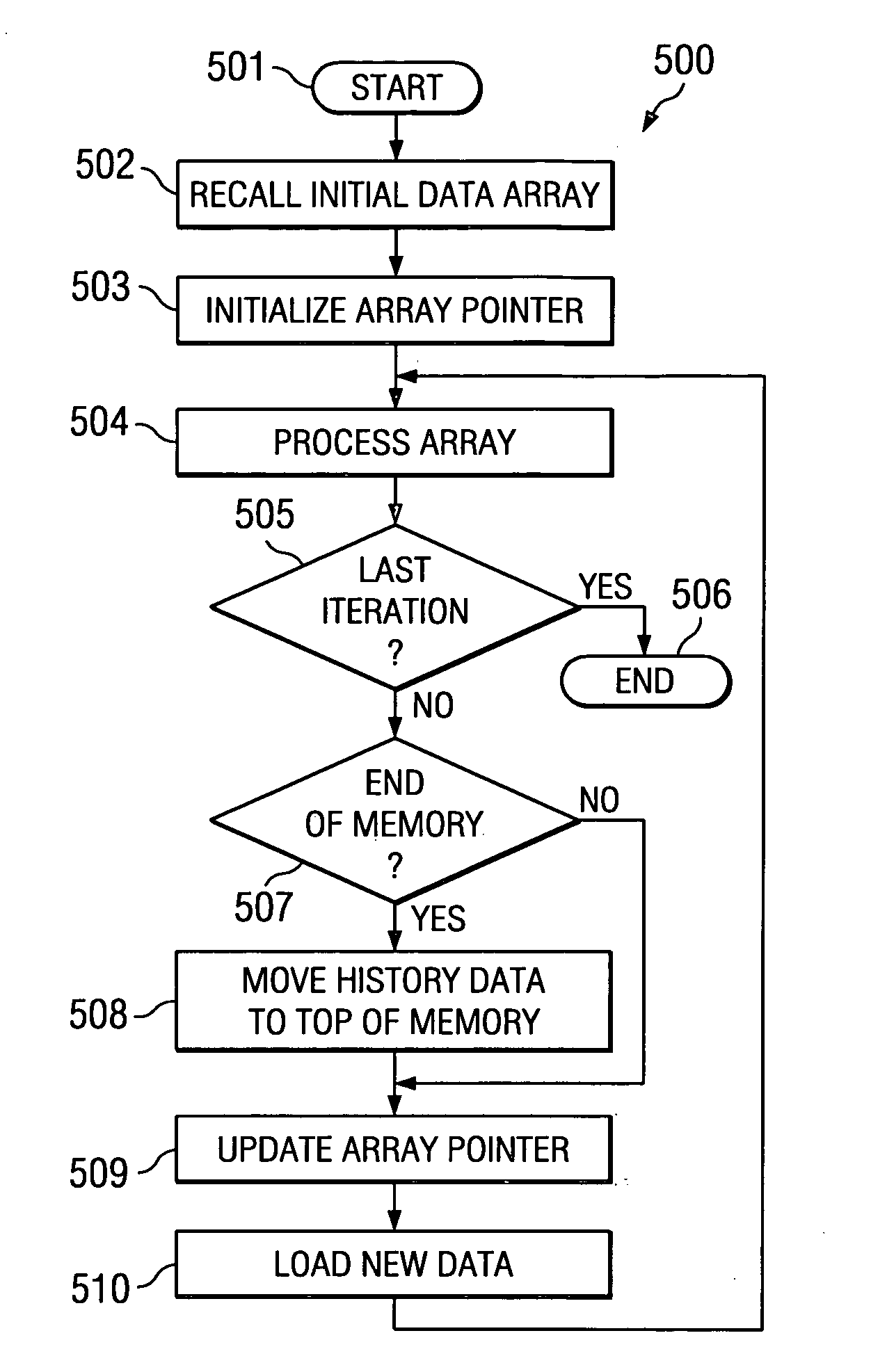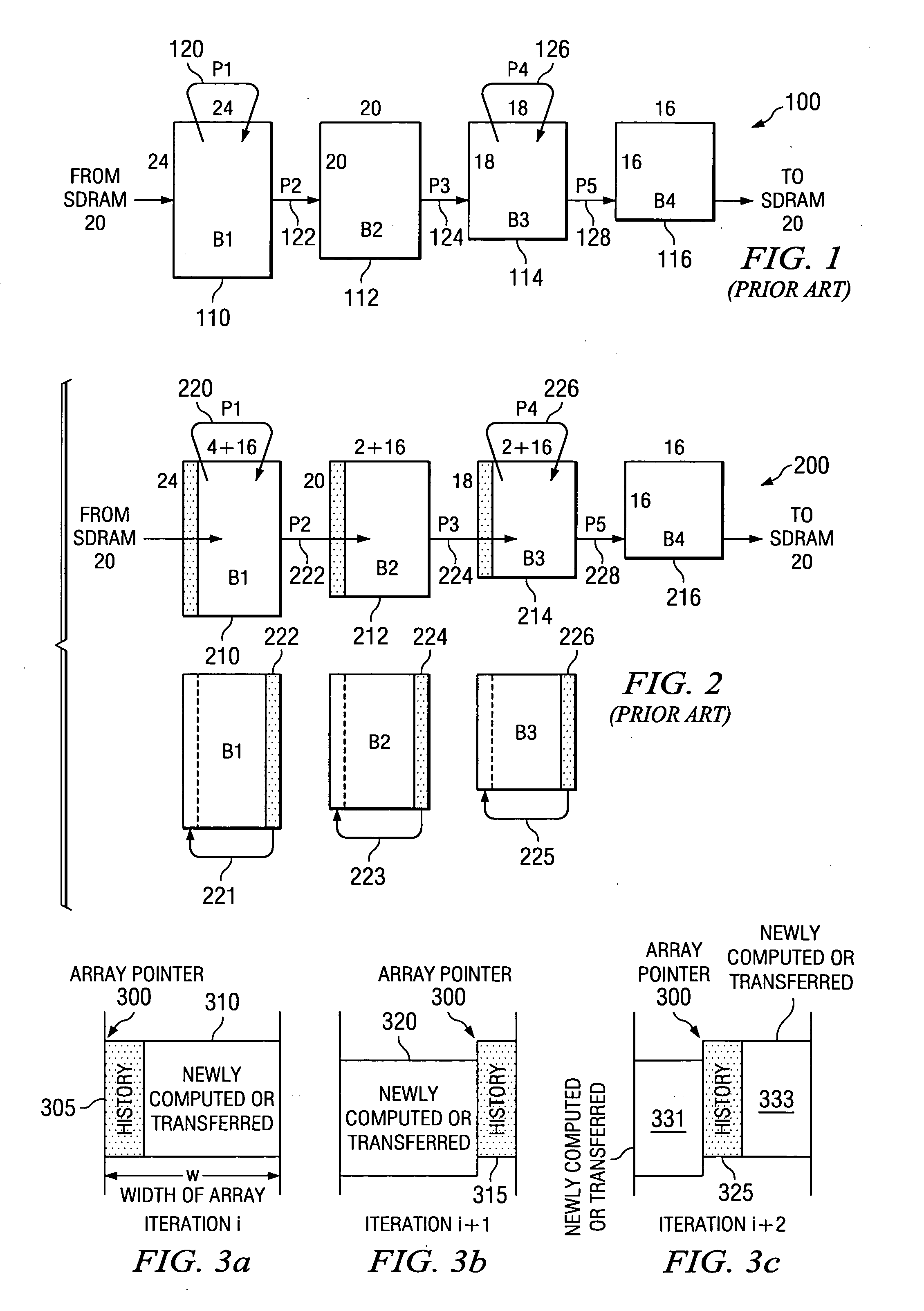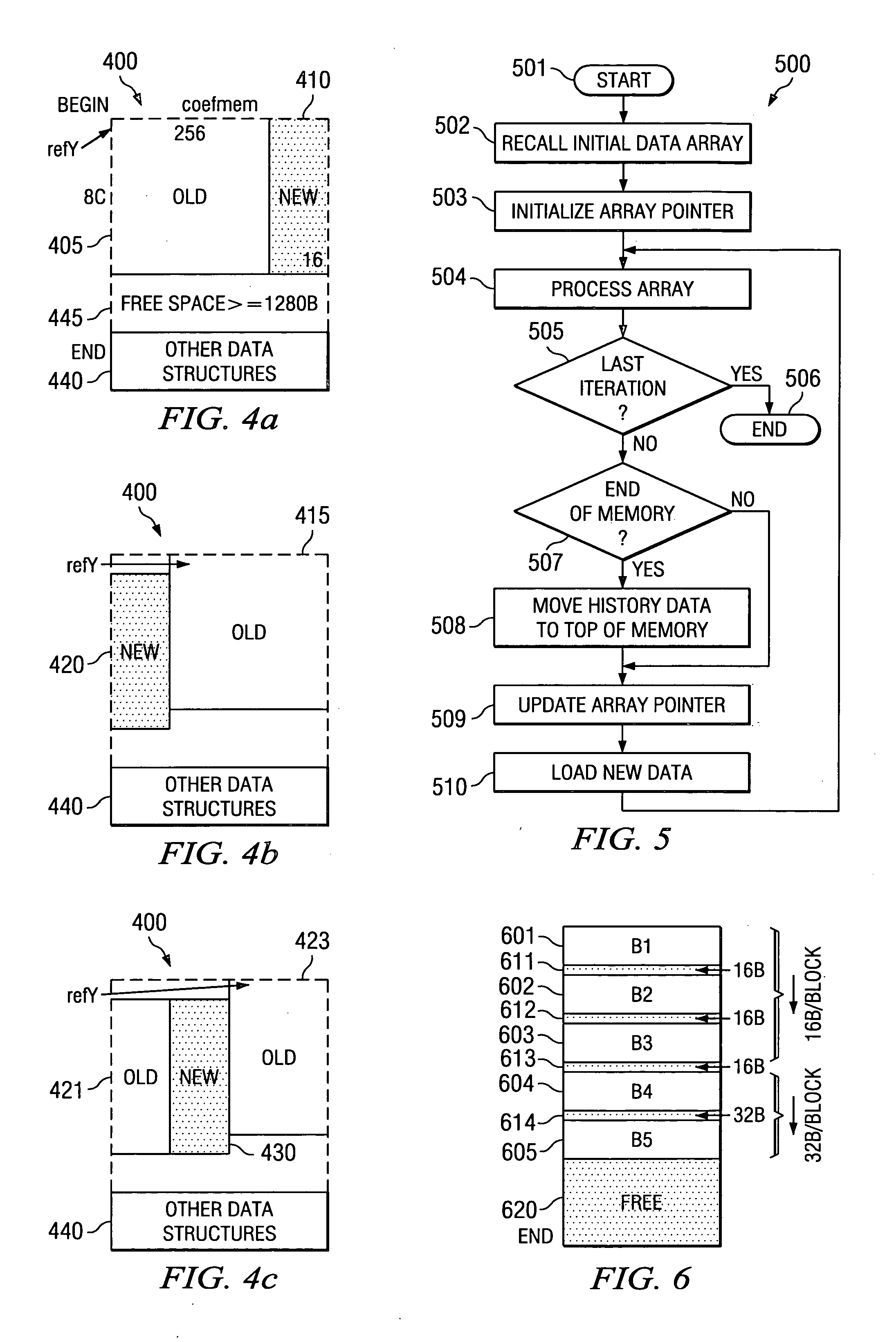Sliding data buffering for image processing
- Summary
- Abstract
- Description
- Claims
- Application Information
AI Technical Summary
Benefits of technology
Problems solved by technology
Method used
Image
Examples
Embodiment Construction
FIG. 1 illustrates a processing example 100 of the conventional over-processing approach. Data is recalled from an external memory such as synchronous dynamic random access memory (SDRAM) 20, processed and stored in a series of buffers 110 (B1), 112 (B2), 114 (B3) and 116 (B4). This processing example 100 includes five processing steps 120 (P1), 122 (P2), 124 (P3), 126 (P4) and 128 (P5). Data recalled from SDRAM 20 is initially stored in buffer 110 (B1). In this example, buffer 110 (B1) is an array of 24 by 24 pixels. Processing step 120 (P1) is an in place operation where the result is returned back to buffer 110 (B1). Processing step 122 (P2) is a filtering step. The resulting data is stored in buffer 112 (B2). Note that buffer 112 (B2) at 20 by 20 pixels is smaller than buffer 110 (B1). Thus processing step 122 (P2) needs more input that its output. Processing step 124 (P3) is another filtering step requiring more input than output. Processing step 124 (P3) inputs 20 by 20 pixel ...
PUM
 Login to view more
Login to view more Abstract
Description
Claims
Application Information
 Login to view more
Login to view more - R&D Engineer
- R&D Manager
- IP Professional
- Industry Leading Data Capabilities
- Powerful AI technology
- Patent DNA Extraction
Browse by: Latest US Patents, China's latest patents, Technical Efficacy Thesaurus, Application Domain, Technology Topic.
© 2024 PatSnap. All rights reserved.Legal|Privacy policy|Modern Slavery Act Transparency Statement|Sitemap



